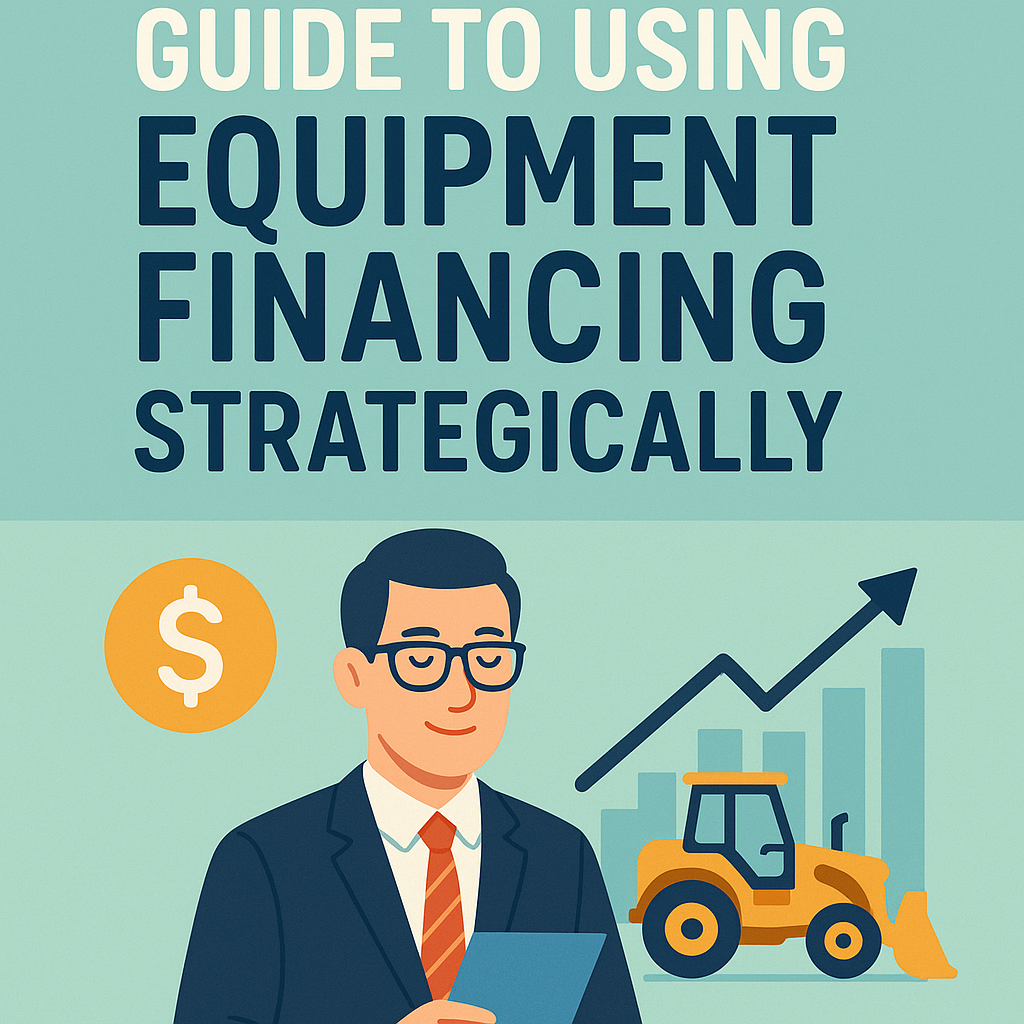Leveraging Equipment Financing and Time Value of Money for Business

Two crucial concepts that can help businesses make smarter financial decisions are equipment financing and the time value of money (TVM). When used together, these financial tools can create opportunities for growth, better budgeting, and efficient use of resources.
This article dives deep into how businesses can leverage equipment financing alongside the time value of money to unlock more strategic growth and better financial management.
Understanding Equipment Financing
What is Equipment Financing?
Equipment financing is a loan or lease option specifically for purchasing machinery, vehicles, technology, or other necessary tools for your business. Instead of paying a lump sum upfront for costly equipment, companies can spread the expense over time, easing the strain on working capital.
Types of Equipment Financing
- Loan Financing: With this option, a business borrows money from a lender to buy equipment. The loan is paid back over a set period, usually with interest. Once the loan is paid off, the equipment becomes the company’s asset.
- Leasing: In this arrangement, the business pays for the use of the equipment over a period of time without owning it. There are two ypes of leases:
- Operating Lease: Typically used for short-term equipment needs. The business doesn’t own the equipment at the end of the lease term.
- Capital Lease: Closer to owning the equipment. At the end of the lease, businesses can buy the equipment for a nominal fee.
Benefits of Equipment Financing
- Improved Cash Flow: Instead of tying up significant cash reserves in equipment purchases, financing allows businesses to spread payments over time.
- Tax Advantages: Depending on the type of financing, some payments may be tax-deductible, reducing taxable income.
- Access to the Latest Technology: Leasing enables businesses to upgrade their equipment regularly, maintaining competitiveness.
- Preserves Working Capital: Companies can invest their capital into other revenue-generating activities rather than depleting it on equipment costs.
The Time Value of Money (TVM)
What is the Time Value of Money?
The time value of money is a fundamental financial principle stating that a dollar today is worth more than a dollar in the future due to its earning potential. Essentially, money available today can be invested to generate returns, making it more valuable now than in the future.
Key Concepts of TVM
- Present Value (PV): The current value of a sum of money that is to be received or paid in the future.
- Future Value (FV): The amount of money that a current sum will grow into in the future, taking into account interest or returns.
- Compound Interest: The process of earning interest on both the initial principal and the accumulated interest over previous periods.
Why TVM Matters in Business
Understanding TVM helps business owners evaluate the long-term costs and benefits of financial decisions. For example, if a company is considering whether to buy or lease equipment, TVM can help them decide which option is more financially beneficial in the long run.
Combining Equipment Financing with Time Value of Money
When businesses combine equipment financing with the time value of money, they can maximize their capital efficiency. Here’s how:
1. Preserving Cash Flow and Earning Returns
Instead of making an upfront purchase, using equipment financing allows businesses to hold onto their cash. This preserved cash can be invested elsewhere, potentially earning returns that surpass the cost of financing. By delaying the outflow of cash, companies can take advantage of the time value of money to grow their capital while still obtaining the necessary equipment.
For instance, let’s say a company can finance a $100,000 piece of equipment at a 5% interest rate over five years. By using financing, the company can invest the $100,000 it would have spent upfront in a project yielding a 7% return. Over time, the company ends up earning more from the invested cash than it pays in financing costs.
2. Evaluating Leasing vs. Buying
TVM is especially useful when deciding between leasing and buying equipment. A company can evaluate the present value of future lease payments versus the upfront cost of purchasing equipment. The decision should be based on which option has the lower present value, taking into account tax advantages, depreciation, and other factors.
For example, if the present value of lease payments is less than the present value of the equipment’s purchase cost, leasing might be the better option.
3. Taking Advantage of Depreciation and Tax Benefits
Certain forms of equipment financing allow companies to deduct depreciation expenses from their taxes. With TVM in mind, businesses can calculate the present value of future tax savings, allowing them to make a more informed decision on financing.
Tax savings today are typically more valuable than tax savings in the future due to the time value of money. Therefore, businesses might prefer financing options that offer immediate tax benefits.
How Businesses Can Apply These Strategies
Evaluate Cost of Financing vs. Potential Return
When considering equipment financing, it’s essential to compare the cost of borrowing with the potential returns on investment from the equipment or from alternative uses of the company’s capital. If the company expects the equipment to generate revenue or cut costs that exceed the financing costs, equipment financing becomes a strategic advantage.
Use Financial Models
Companies should employ financial models, such as net present value (NPV) and internal rate of return (IRR), to evaluate financing decisions in the context of TVM. These models help businesses understand the real cost of financing and how the value of money changes over time.
Build a Cash Flow Forecast
By forecasting cash flows, businesses can plan for future equipment needs while maintaining financial stability. This allows companies to strategically finance equipment in a way that aligns with long-term goals and anticipated growth.
Frequently Asked Questions (FAQs)
1. What is the main advantage of equipment financing?
The primary advantage of equipment financing is that it preserves your company’s cash flow by spreading the cost of expensive equipment over time. It allows businesses to acquire necessary tools without a large upfront payment.
2. How does the time value of money apply to business decisions?
The time value of money helps businesses evaluate the future costs and benefits of their financial decisions. By understanding that money today is worth more than money in the future, businesses can make better investment and financing decisions.
3. Is leasing equipment better than buying it?
It depends on the company’s financial situation. Leasing can be advantageous for short-term needs or when companies want to upgrade equipment frequently. Buying may be better if the equipment has a long lifespan and will be used consistently.
4. How do tax benefits factor into equipment financing?
Certain forms of equipment financing allow for tax deductions on interest or lease payments. Businesses can also benefit from depreciation deductions. The time value of money helps businesses decide when and how to use these tax benefits.
5. What is the difference between present value and future value in TVM?
Present value is the current worth of a future sum of money, while future value is how much a sum of money today will grow into in the future, considering interest or returns.
6. How can equipment financing help businesses grow?
By reducing the need for large upfront costs, equipment financing frees up capital that can be invested in other areas of the business, driving growth. It also enables businesses to access the latest technology, increasing productivity.
By integrating equipment financing with the time value of money, businesses can make smarter financial decisions, improve cash flow, and strategically plan for long-term growth. This combination not only helps in managing immediate financial needs but also builds a solid foundation for future success.




No comment